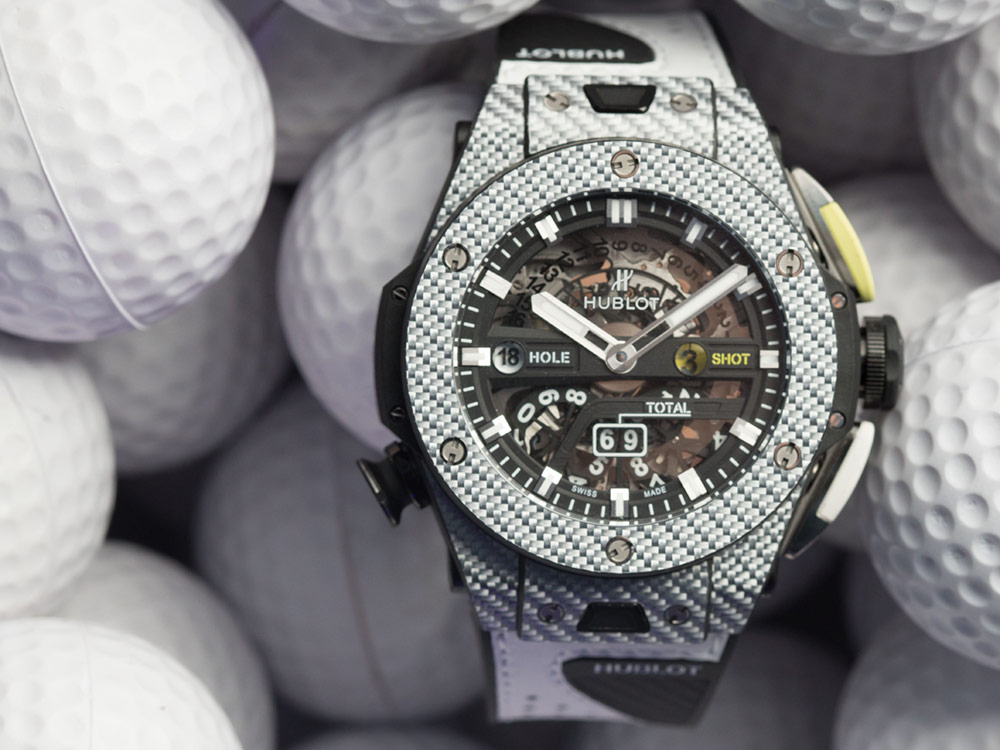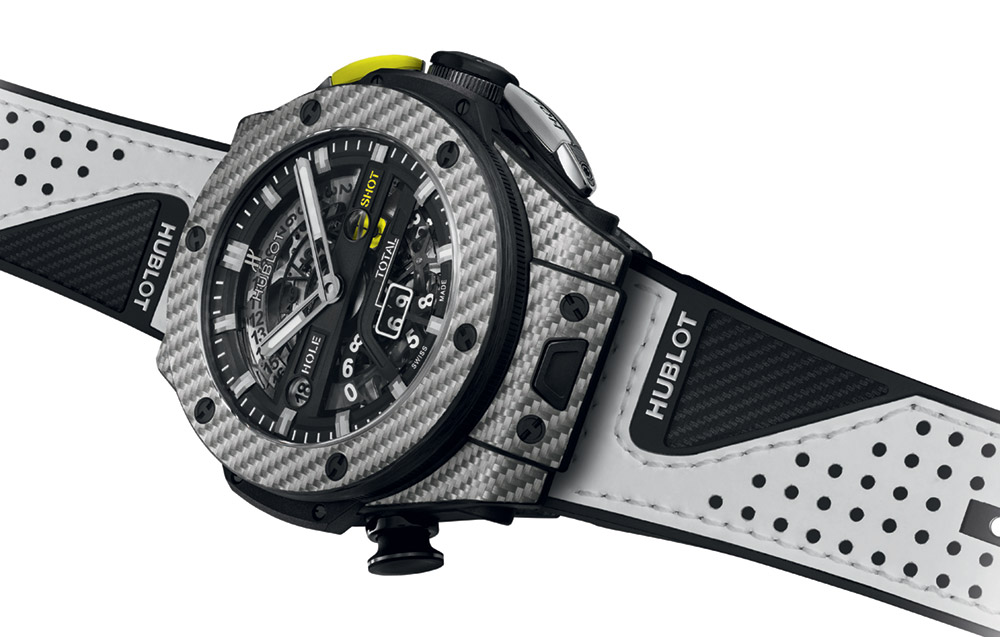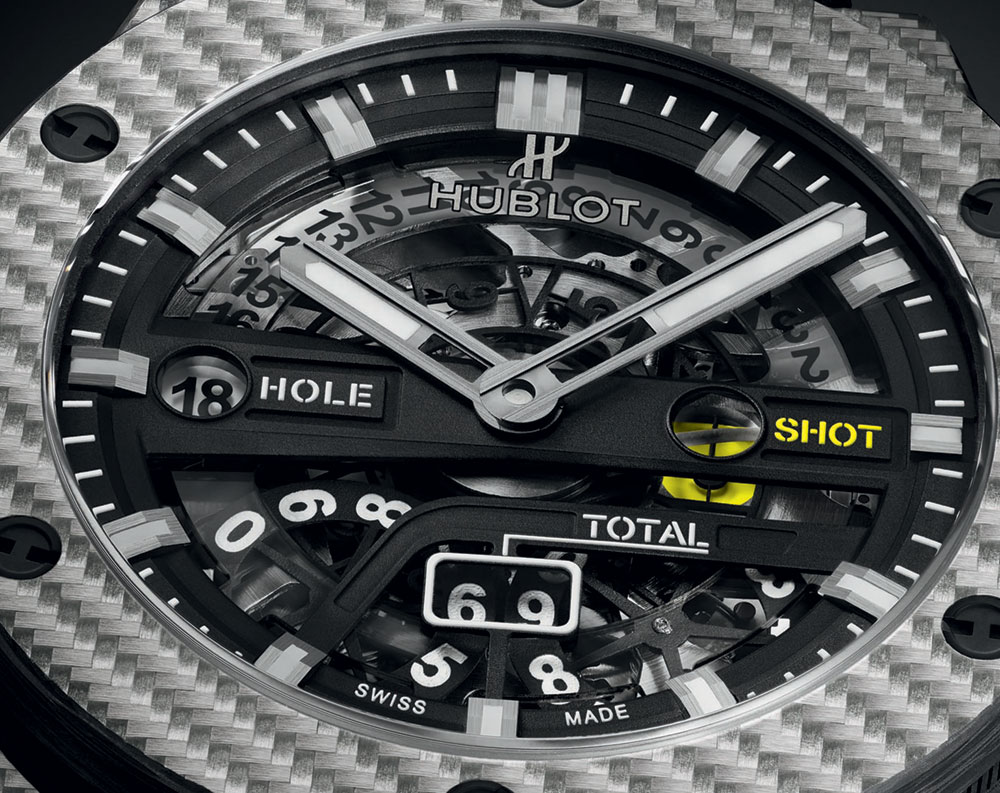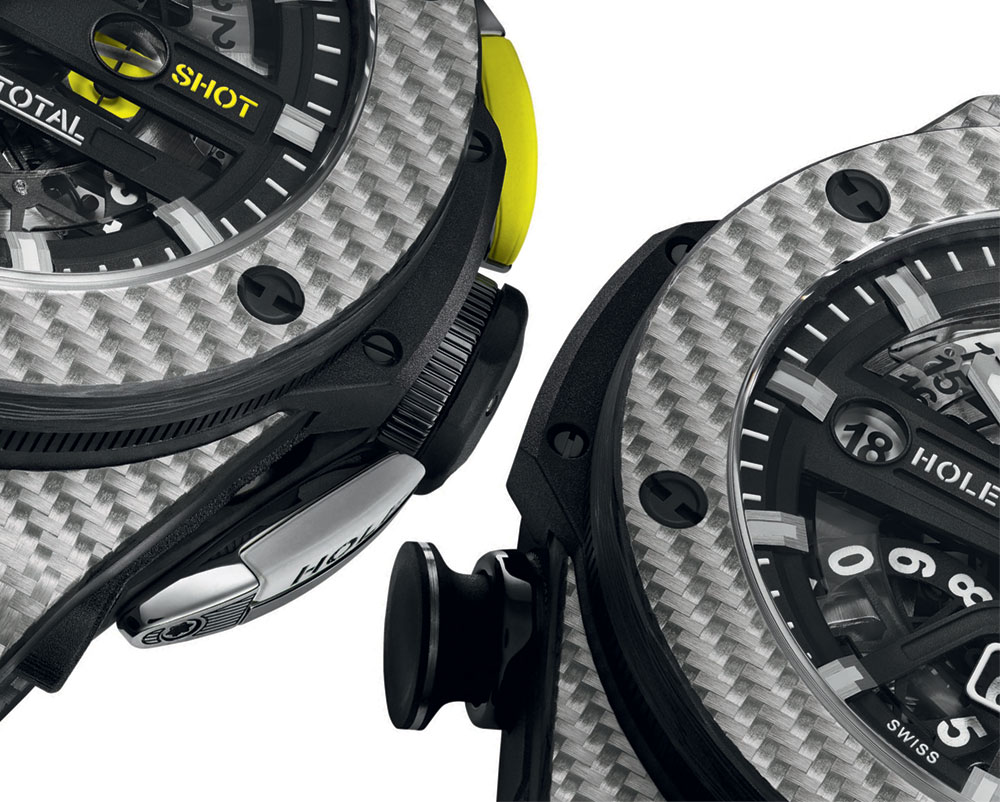
There are few modern, successful brands which are as polarizing and incite just as much discussion among watch enthusiasts as Hublot.While their designs may not be for everyone, it’s hard to reason that their prolific use of innovative techniques and materials – not to mention marketing and collaborations – outpaces their peers with a large margin. With the launch from the Hublot Big Bang Unico Golf, the brand now introduces a new “complication” towards the horological world – a “golf counter,” if you will.


The Hublot Big Bang Unico Golf is being launched in cooperation with champion golfer Dustin Johnson and was developed as a way for golfers to keep track of their score while on the course. This is made possible through development of a new module by Hublot that sits on top of its UNICO movement. Dubbed the caliber MHUB1580, it is an automatic movement with 3 days of power reserve and it is equipped with three pushers – at 2:00, 4:00, and 8:00. The pushers flanking the crown might be reminiscent of chronograph watches, but these are more or less simple tally counters. Much like the recent Richard Mille RM 70-01 “cycling watch” – though actually more involved with terms of the tally counters as it uses and totalizes multiple displays – it is usually possible for the counters to be largely independent of the base movement and it is power source.


The pusher at 2:00 activates the stroke counter, seen at 3:00 around the dial, and keeps track of the amount of shots per hole. Whenever a player advances to the next hole, they note it while using pusher at 4:00 which resets the shot counter to 0, but advances the opening counter at 8:00 by 1. There is a counter at the bottom of the dial that tallies in the total number of strokes for the game. At the end of the game, all you have to do is activate the pusher at 8:00 which resets everything to 0. Hublot has additionally incorporated a locking mechanism around the 8:00 pusher to avoid accidentally resetting the score to 0 – all you have to do is rotate the pusher by 45 degrees. A little feature, but one that I suspect will prove very useful.


The case and bezel for that watch are machined from Texalium, certainly one of Hublot’s many proprietary materials – in this instance, a combination of aluminum and carbon fibre. Despite its large proportions of 45mm wide by 18.1mm thick, the Hublot Big Bang Unico Golf weighs in at a very light 98g thanks to the light Texalium (probably important for swinging a golf club). The pushers are titanium and the case is completed with AR-coated sapphire on both the front and back. The screws on the bezel are titanium – using aluminum would risk the screws fusing in to the bezel over time. The watch is rated to 100m of water-resistance, that is par for the course for any sport watch.


The dial for the Hublot Big Bang Unico Golf is a matte black ring having a central bridge and a secondary bridge to hold the 6:00 clock indicator in place. The rest is left open to provide the wearer a view of the wheels for that shot and hole counters and parts of the gear train. The applied hour markers and hands are rhodium plated and full of lume for low-light legibility. Generally, I fall into the camp that believes legibility of the watch is important and should never be compromised for the sake of design, and i believe this watch seems plenty legible.

Admittedly, this is a very esoteric complication but that’s what makes it potentially appealing. Mechanical watches in this day and age are not entirely about being practical – there needs to be some degree of fun, intrigue, or mechanical complexity into it. And, I think the Hublot Big Bang Unico Golf ticks those boxes while being potentially useful, particularly if you play a lot of golf. Associated with pension transfer Hublot watches, the bold design and large sizes may turn away some, and can be all the more popular with others. The Hublot Big Bang Unico Golf ships with two straps – a mixture of black rubber with white calf skin, as well as a black velcro strap, and each has a titanium/carbon fiber deployant. It's available from retailers and authorized distributors for $31,500. hublot.com
Ball’s Temperature Measurement technology (TMT) describes a proprietary module included to, we believe, the ETA 2892 automatic movement for this watch, now called the BALL RR1601-C. Ball Watch Engineer Master Ii explains that it is system which uses a “spiral bimetallic thermometer” is a lot more precise than thermometers on strings which came before it, also claims to have the ability to measure the environment’s temperature from –31°F to 113°F (–35°C to 45°C), having a precision of 97 percent, or a “precision range of inside +10°F.” Ball notes the engineering challenge of maintaining the motion 5.1mm thick using the accession of the module’s temperature-measuring coil. Unfortunately, it doesn't look like this component of the movement is viewable with the screen caseback, even though it is reasonable that you would want it closer to the dial up and away in the wrist.We have seen this technology (and layout, such as the date window at 1 o’clock), for instance, from the Ball Trainmaster Kelvin watch (reviewed here by Patrick Kansa). Temperature always appeared like a cool thing to have the ability to reference from one’s wrist in my experience personally, but I have wondered how this can be impacted by body heat. It should a minimum of be enjoyable to see the hand movement along the way inside or outside, as well as to point to your wrist as you whine about the weather.aBlogtoWatch has been enthused about the Ball for BMW line from in early stages, and it’s nice to find a well-executed design continuity develop over the range. I consider it to be able to evoking a slick, modern automotive vibe. There happen to be a chronograph, a power reserve, a GMT, and 2 or three basic three-hand-plus-date watches, all limited editions and all COSC chronometer-certified, just like this one.

